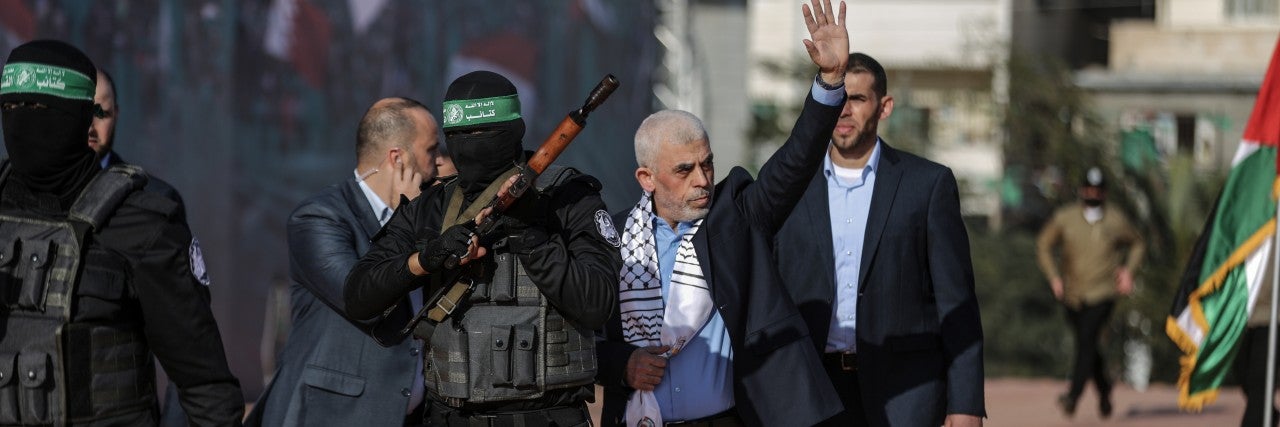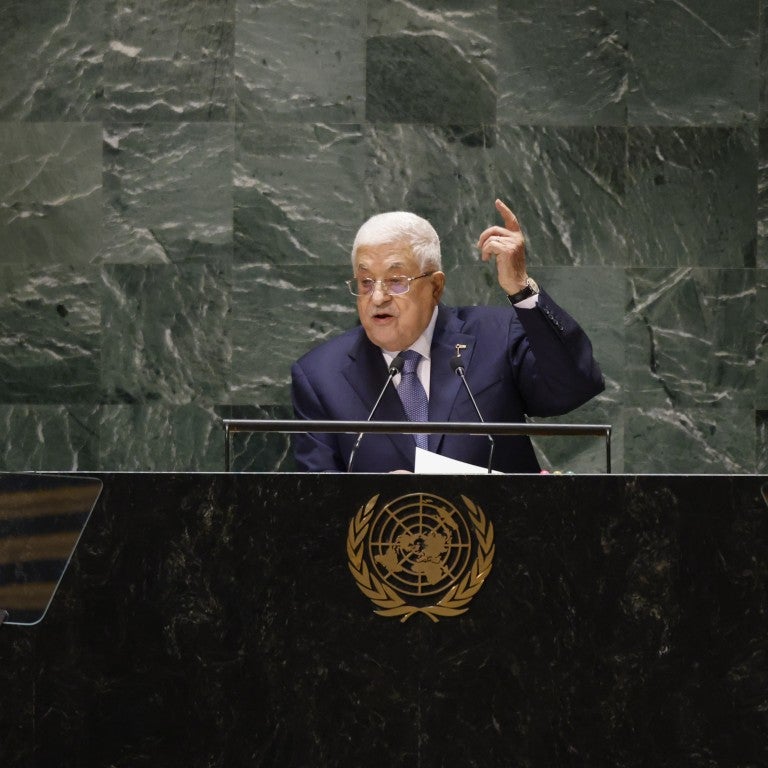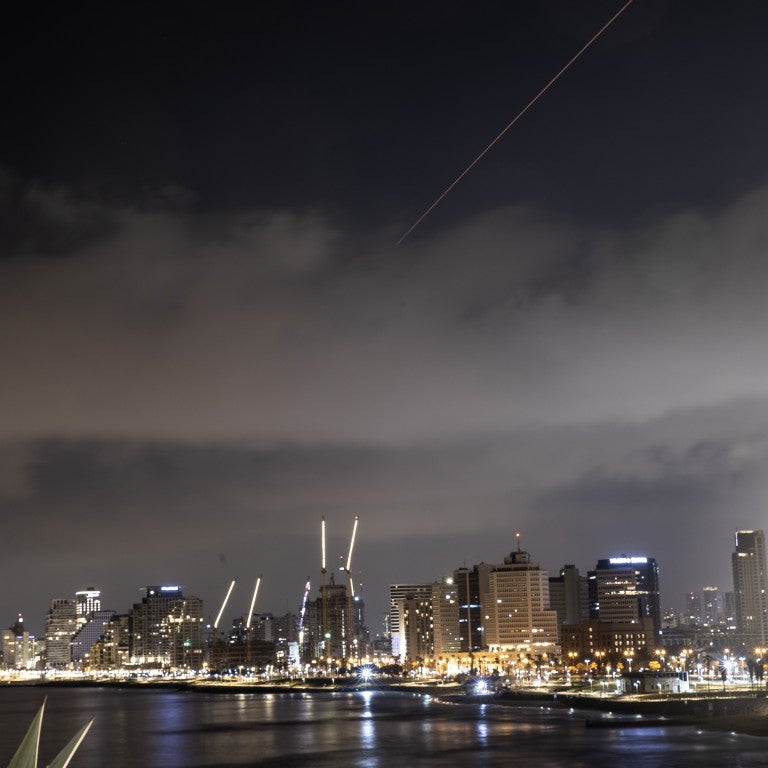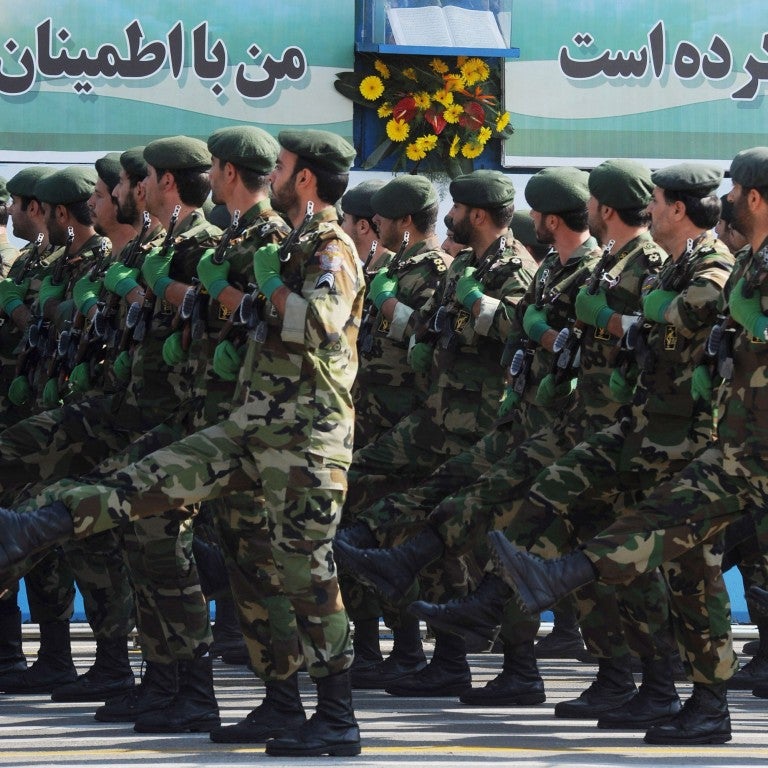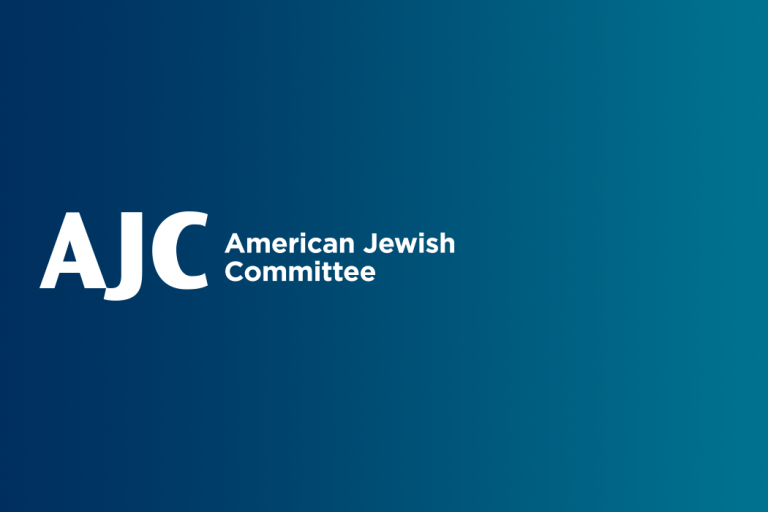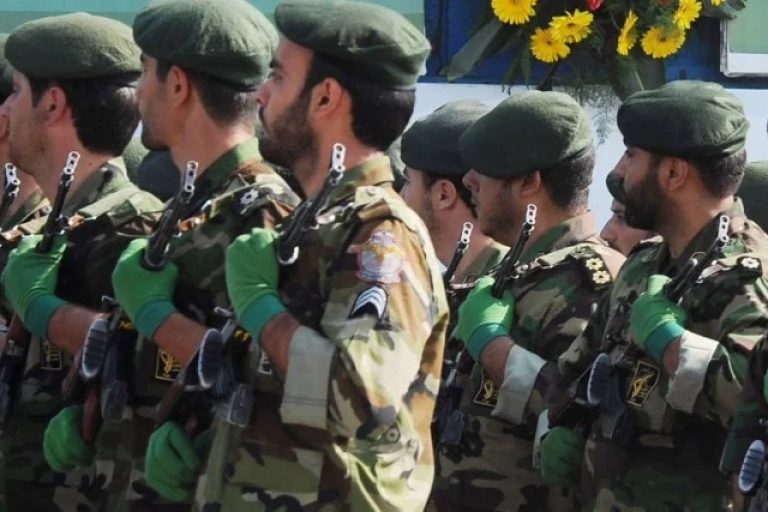November 2, 2023
Since coming to power in a violent coup in 2007 in Gaza, the Iranian-backed Hamas terror group has systematically exploited Palestinian civilians, using them to protect their terrorist infrastructure while stealing enormous quantities of resources to build their war machine.
From diverting economic resources to the endangerment of human lives, these activities not only perpetuate the suffering of the Palestinians in Gaza - representing a crime against humanity - but also give Hamas operational advantages in its war against Israel where they win not only when they kill Israeli soldiers, but also when Israel inadvertently harms Palestinian civilians.
Here are seven ways Hamas exploits Gaza’s Palestinian civilians to further its genocidal aim to destroy Israel.
- Hamas diverts critical civilian resources for its terrorism
Construction materials for terror tunnels: Hamas has a long history of diverting cement and steel intended for civilian reconstruction projects for the creation of a complex terror tunnel network known as “the Metro” that runs beneath Gaza.
Hamas’ tunnel network is believed to be the second largest in the world, behind North Korea, and is estimated to be around 500km (311 miles) with some 1,300 tunnels. They are equipped with rails, electricity, ventilation, communication lines, and even repurposed oxygen tanks initially sent as aid for Gazan hospitals.
Ambulances as transport vehicles: Hamas uses ambulances as part of its terror operations to shield its terrorists from Israeli forces. This use of ambulances not only denies civilians who are injured the use of the ambulances but puts at risk medical workers.
Everyday items for rockets: Hamas also has a history of transforming everyday items into weapons. Sewer pipes are pulled out of the ground to make rockets, and fiberglass intended to repair fishing boats is also diverted to the rocket industry. Even chemicals like castor oil and additives such as aluminum dust have been imported to produce rocket fuel, along with converting salt into a substance called AP (ammonium perchlorate for rocket fuel), using Iranian techniques.
Take Action Now
- Hamas steals Palestinian funds to build its terror operations
The Hamas leadership steals funds intended for Palestinian civilians to build a financial empire outside the Gaza Strip worth about $700 million that supports its terror operations.
Taxes to fund terrorism: In 2018 alone, Hamas made approximately half a billion dollars from taxes on goods such as gas and cigarettes coming into Gaza through the Rafah border crossing with Egypt. Instead of investing this substantial income in the welfare of Palestinian civilians, the funds go primarily to fund its terror operations, offering no vision for economic growth or improvement in living conditions.
Foreign money: Nor does Hamas invest any of the tens of millions of dollars it gets from Iran every year - estimated to be about $100 million a year and split among Hamas, Palestinian Islamic Jihad, and Popular Front for the Liberation of Palestine - in any civilian project, instead investing all of it towards its terror operations.
- Hamas attacks civilian infrastructure that supports Palestinians
Hamas repeatedly attacks and sabotages infrastructure set up exclusively to assist Gazans.
Destroying fuel terminals: In 2018, for example, Hamas orchestrated an attack on the Kerem Shalom fuel and gas terminal— the only one that supplies the Gaza Strip. This was not a random attack; Hamas operatives divided rioters into groups with explicit instructions on which part of the crossing to target, effectively cutting off basic supplies to over two million Gazans. The rioters set parts of the cross ablaze three times, causing significant damage to critical infrastructure, including fuel pipelines and conveyor belts. Israeli authorities were forced to shut down the crossing for several days to repair it. Hamas also similarly attacked the Nahal Oz fuel crossing into Gaza in 2008 and it has remained closed since.
Destroying power and water lines: Since October 7, Hamas hit nine power lines from Israel with rockets. Those lines supply more power to the Strip than the Gazan power plant does. It also shut down a water pipe leading from Israel to Gaza (although Israel only supplies 10 percent of Gaza’s water). Nevertheless, Israel opened two water pipes to Gaza, delivering nearly 30 million liters of Gaza per day since October 28.
- Hamas deliberately puts Palestinian civilians in harm’s way
Hamas advises civilians to ignore calls for evacuation from the Israel Defense Forces, intentionally putting them in harm’s way. This tactic places military targets next to civilian populations, creating both operational and public relations advantages for Hamas. It leverages the ethical dilemma faced by the Israel Defense Forces, which seeks to minimize civilian casualties and, unlike Hamas, distinguishes between civilians and combatants.
Blocking civilian evacuations: Since October 7, the IDF has made available recordings of calls with Gazan civilians who report how Hamas regime vehicles and terrorists actively blocked the passage of those seeking to comply with Israeli evacuation calls to move south and were told to turn back. While some 750,000 Gazans were able to evacuate – representing a clear vote of no confidence in their regime – many struggled to get past Hamas’ blocking efforts.
Hamas has also been blocking foreign nations from leaving Gaza. Currently, it is believed there are 200 British and 600 American citizens in the Gaza Strip.
- Hamas rockets kill Palestinians
Hamas’ failed rockets present a clear and present danger to Gazan civilians. On October 17, an explosion at Gaza's Al-Ahli hospital led to a significant number of casualties. A subsequent investigation by the Israel Defense Forces (IDF) exposed the Palestinian Islamic Jihad (PIJ) as the responsible party for the failed rocket launch that resulted in the disaster.
Between October 7 and October 17, some 450 rockets aimed at Israel have misfired and landed within Gaza itself, imperiling its own residents.
In May, during an escalation between Israel and PIJ, some 25% of rockets failed and fell in Gaza, in some cases killing civilians.
- Hamas imperils Gaza’s schools, hospitals, and mosques
The Hamas ‘Metro’ tunnels aren’t just hidden away in remote locations; they're strategically placed underneath hospitals, schools, mosques, and UNRWA sites. This not only threatens those places with terrorist activity but also undermines the building’s foundations and stability, making them prone to collapse.
Terror hubs under hospitals: Shifa Hospital in Gaza City, for instance, is not just the Gaza Strip’s largest medical facility. It also serves as a command-and-control hub for Hamas, complete with a network of terror tunnels and various entrances within the hospital premises. Hamas operates its command and control centers in different departments of the hospital.
A Hamas terrorist confirmed that the terror group specifically uses hospitals and medical clinics as cover for its operations because they know Israel won’t target them.
Rockets under schools: In Operation Protective Edge in 2014 between Hamas and Israel, UNRWA announced that it discovered rockets hidden in a vacant school in the Gaza Strip. The school is situated between two other UNRWA schools that each accommodate 1,500 internally displaced persons. UNRWA said it was the second time that this had happened.
- Hamas manipulates the media
Hamas also sways international media by framing the conflict in a manner that obscures its exploitation of Palestinian civilians. Tragic stories of dead Palestinians often make headlines without the context that many were intentionally placed in harm's way due to Hamas's tactics.
The Hamas-controlled Palestinian Health Ministry in Gaza synchronizes all of its media statements with the Hamas terrorist leaders, thereby serving as a propaganda mouthpiece.
Gaza hospital explosion: The recent example of the explosion at the Al-Ahli Arab Hospital in Gaza City highlighted how Hamas manipulates foreign media into its narrative. Several international media organizations initially cited in their coverage statistics provided by the Hamas-run Palestinian Health Ministry. For example, the New York Times ran with the headline, “Israeli Strike Kills Hundreds in Hospital, Palestinians Say.” The Ministry had falsely claimed within a short time of the blast that an Israeli airstrike killed 500 Palestinians at the hospital, as part of Hamas’s media strategy of demonizing Israel’s efforts to protect Israeli civilians. The use of statistics provided by Hamas-run agencies in Gaza often plays into the terror group’s propaganda efforts to lay the blame on Israel for civilian deaths in Gaza.
The New York Times eventually apologized for publishing the headline, acknowledging that its coverage of the incident should have been more rigorous. President Joe Biden reportedly blasted the headline from the New York Times, saying that it “was irresponsible and could have triggered military escalation in the Middle East.”
